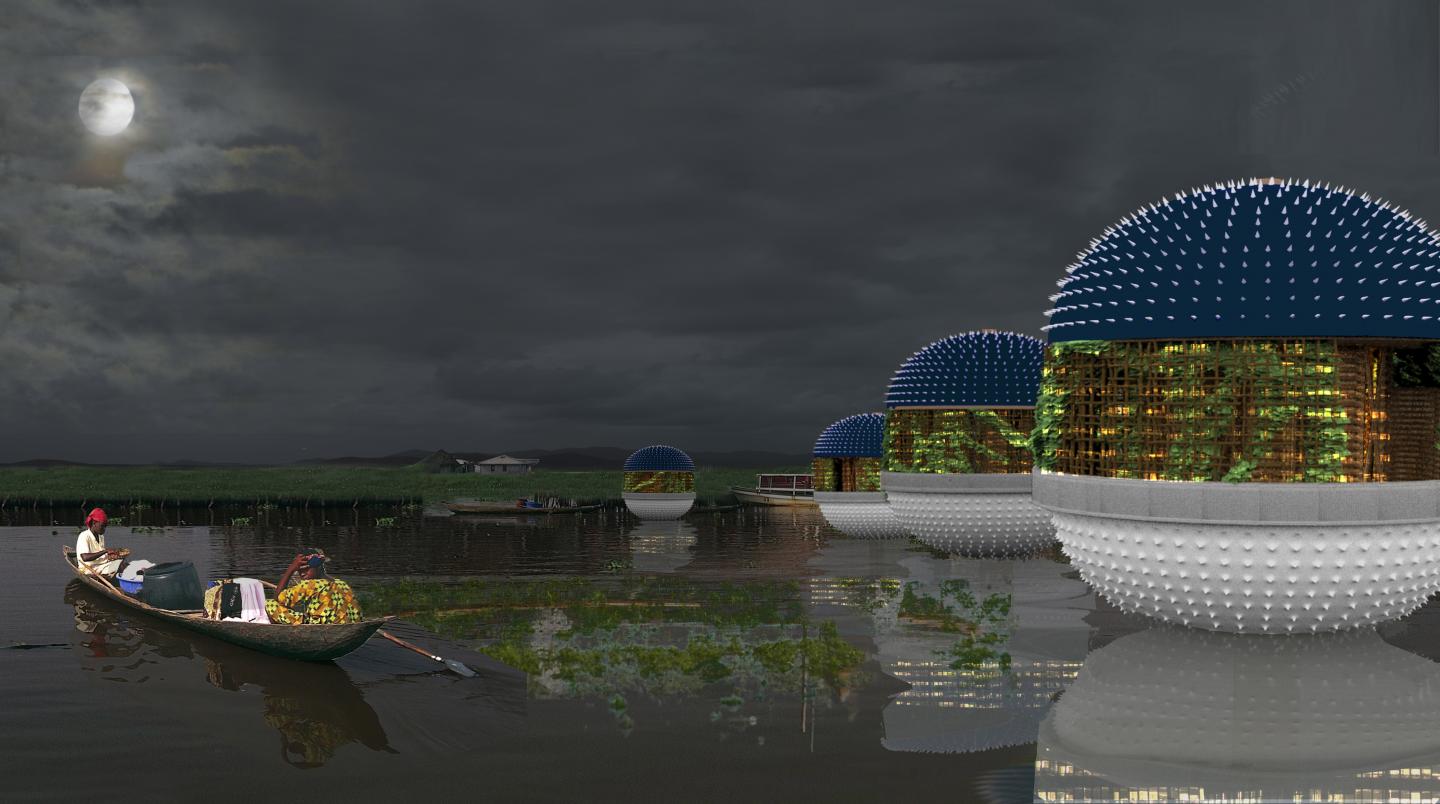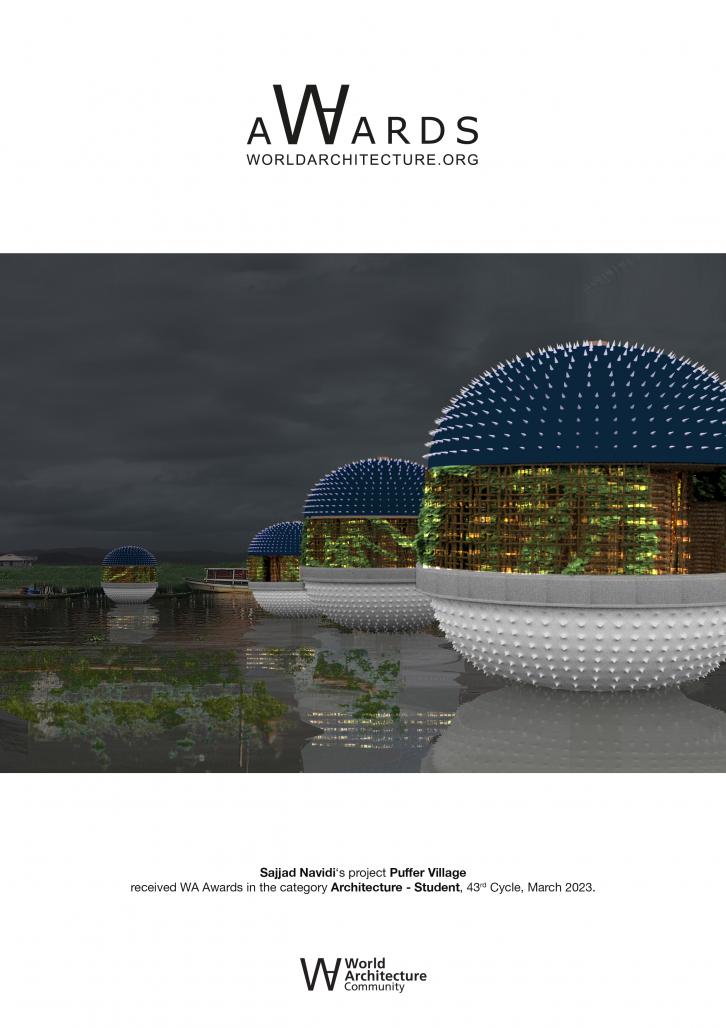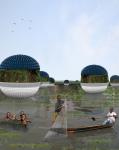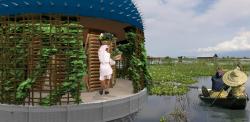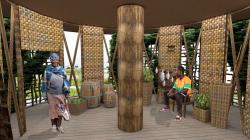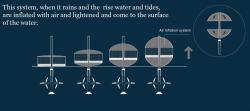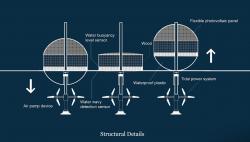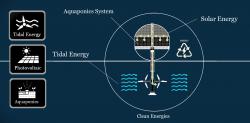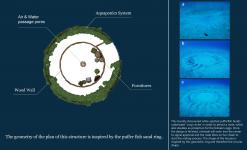Smart village to adapt to changes in sea level rise inspired by the biomimetic structure of "Puffer Fish"
A smart village that responds to the environment and adapts to it.
One of the major future crises of the world is rising sea levels, which could pose a serious threat to human survival. This danger further affects coastal towns and villages close to the water.
Ganvie is one of the largest lake villages in Africa in the Benin region. One of the biggest problems of the people of this region is the high sea level. This has led them to build their houses on the water. These wooden houses are worn out and destroyed over time due to their poor structure, and this can endanger the lives of the villagers.
We need a system that can adapt to sea level conditions. Nature always has the best answer for us.
There are many species of pufferfish in Lake Nokoué near the village of Ganvie. The biomimetic structure of puffer fish and its strategy to deal with enemies is by inflation with water or air. This defense mechanism helps them escape from predators.
Inspired by this feature, we built smart homes that could adapt to changes in sea levels. This system is able to lighten and rise to the surface of the water by increasing the volume and inflating its balloon skins with air during rain and tides when the sea level rises. The system is also able to fill its balloon skins with water during Stormy and wavy conditions when there is a possibility of damage and movement of houses, and to resist damage by increasing weight and heaviness.
The shape and geometry of the house plan is inspired by the sand rings of pufferfish. They build underwater 'crop circles' in order to attract a mate, which also doubles as protection for the female's eggs. Once the design is finished, a female will swim into the center to signal approval and the male bites on her cheek to start the mating process. The shape of the houses is inspired by this geometric ring and therefore the circular shape. (Dailymail)
This structure has two types of sensors sensitive to rising water levels and water wavy detection sensor. In stable conditions, the balloon skins are closed and the structure is similar to houses with flat roofs, but in conditions of tide and rain, sensors sensitive to water level control activate the air fan under the structure and the balloon skin is filled with air and the structure is placed on the surface of the water. In stormy and rough seas, impact sensors activate the base pores of the substructure and the balloon skin is filled with water and becomes heavy and durable.
This structure supplies all its energies, including (air fan system, lighting, etc.) by clean energies. Below this structure, the tidal energy system is designed to generate electricity from seawater waves. Also, on the upper part of the balloon skin, flexible photovoltaic panels are designed to generate electricity from solar radiation. To produce part of the rural economy, agriculture has been created with an Aquaponic system in the wooden fences around the houses.
In the top view of the project site, many columns have been created so that the villagers can gradually build their puffer houses on them.
This system can be used in all coastal areas and villages where the risk of rising sea levels threatens their existence and future.
2021
This structure supplies all its energies, including (air fan system, lighting, etc.) by clean energies. Below this structure, the tidal energy system is designed to generate electricity from seawater waves. Also, on the upper part of the balloon skin, flexible photovoltaic panels are designed to generate electricity from solar radiation. To produce part of the rural economy, agriculture has been created with an Aquaponic system in the wooden fences around the houses.
Designer: Sajjad Navidi
Supervisor: Mr. Jacques Rougerie
Puffer Village by Sajjad Navidi in Benin won the WA Award Cycle 43. Please find below the WA Award poster for this project.
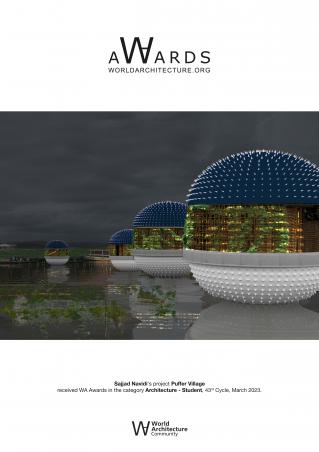
Downloaded 0 times.
Favorited 1 times
